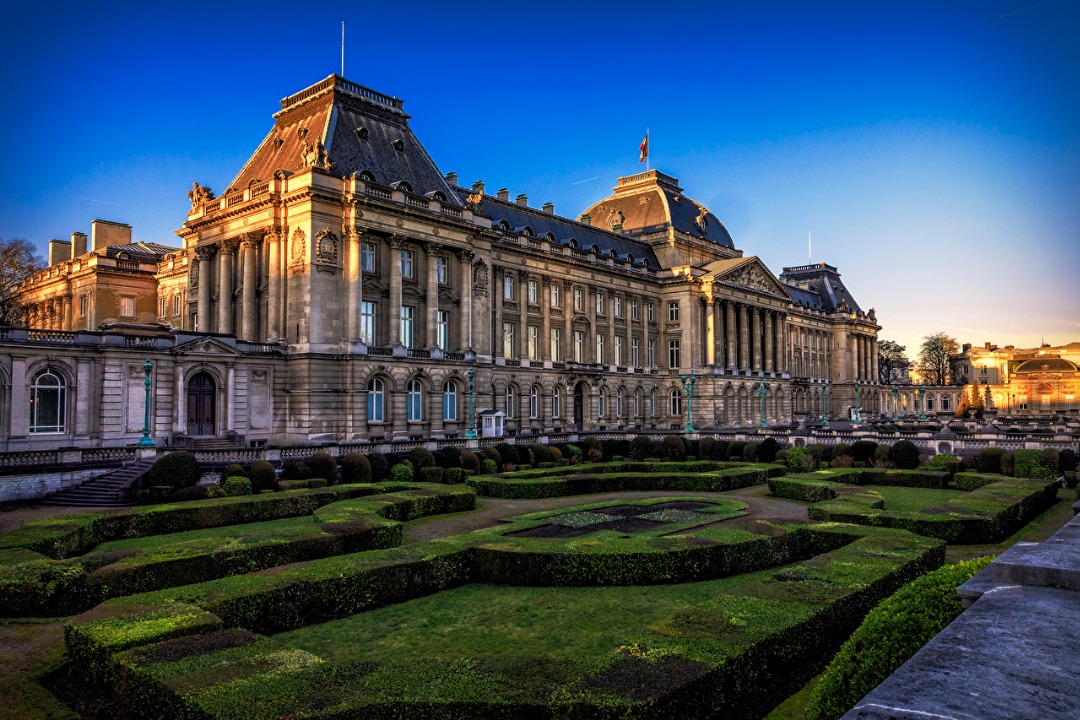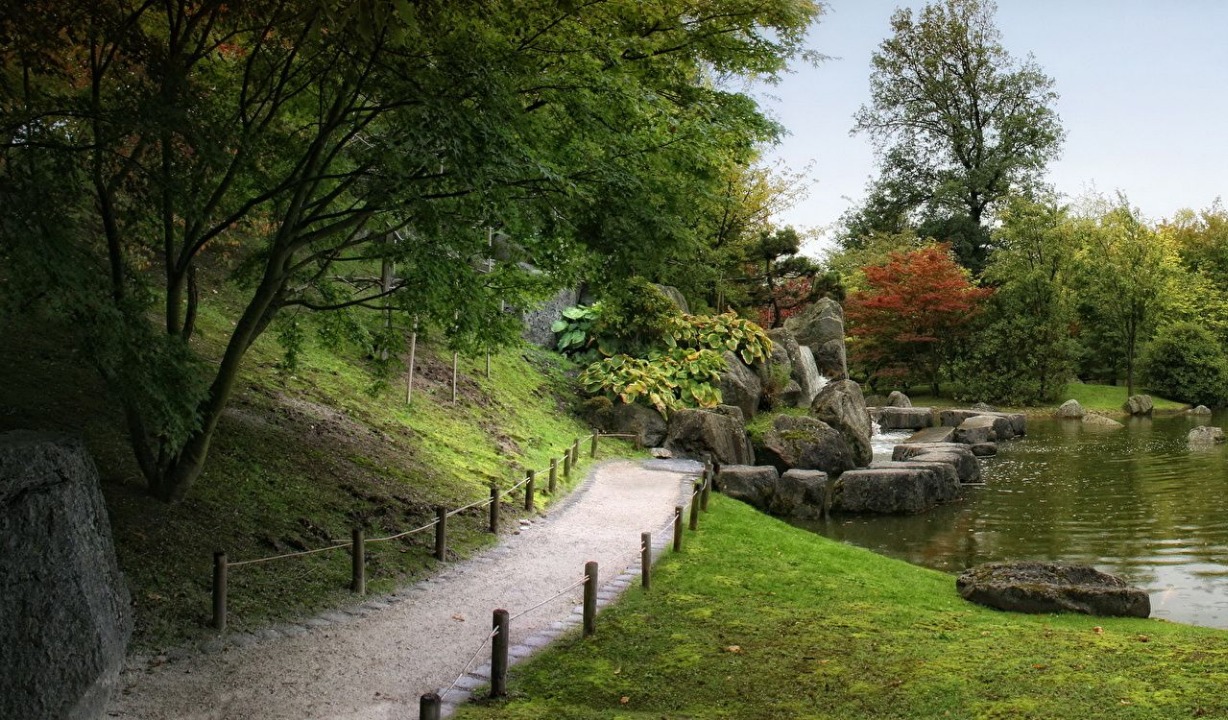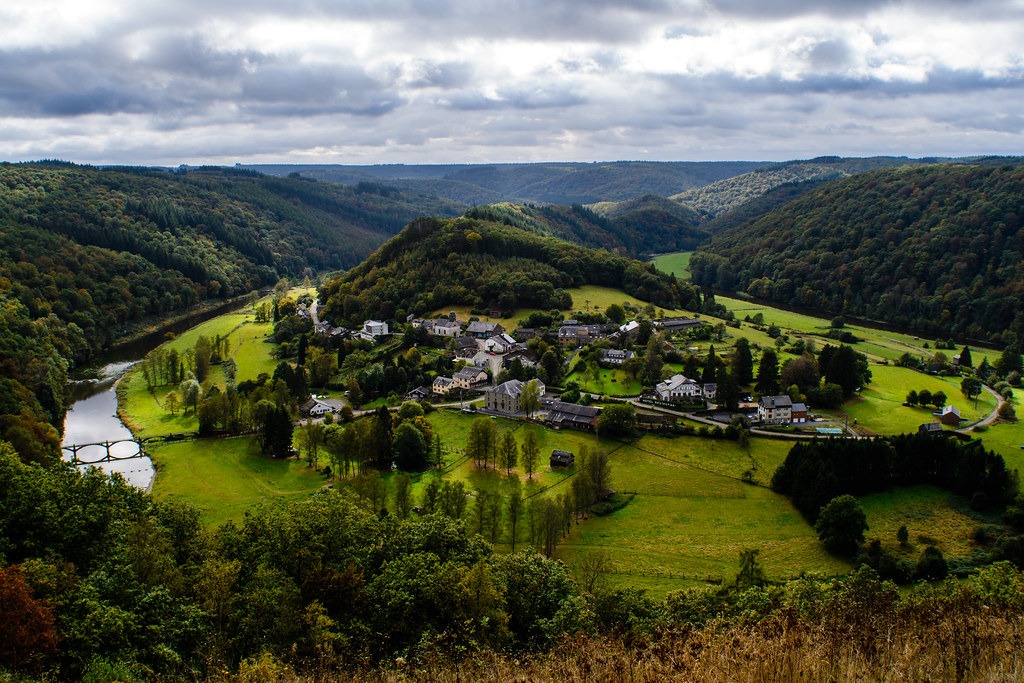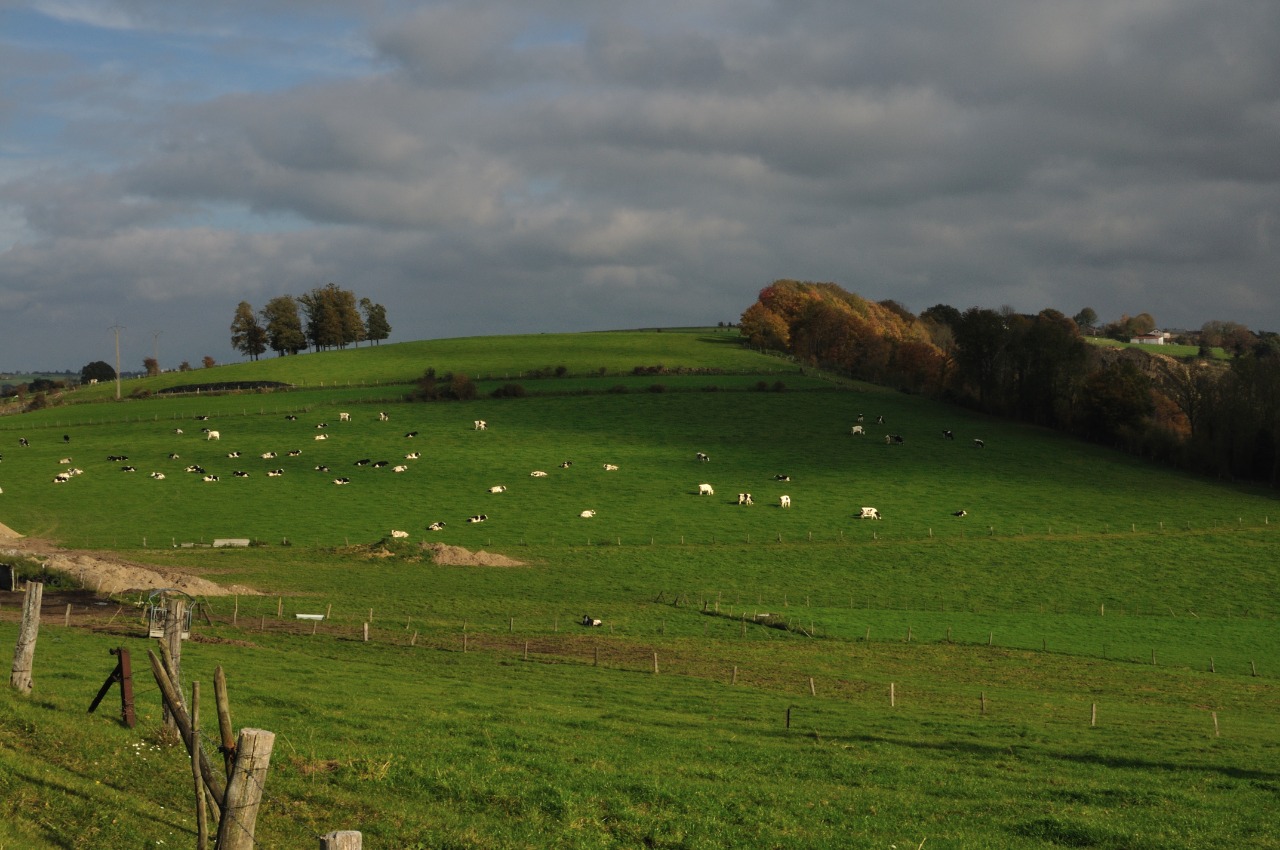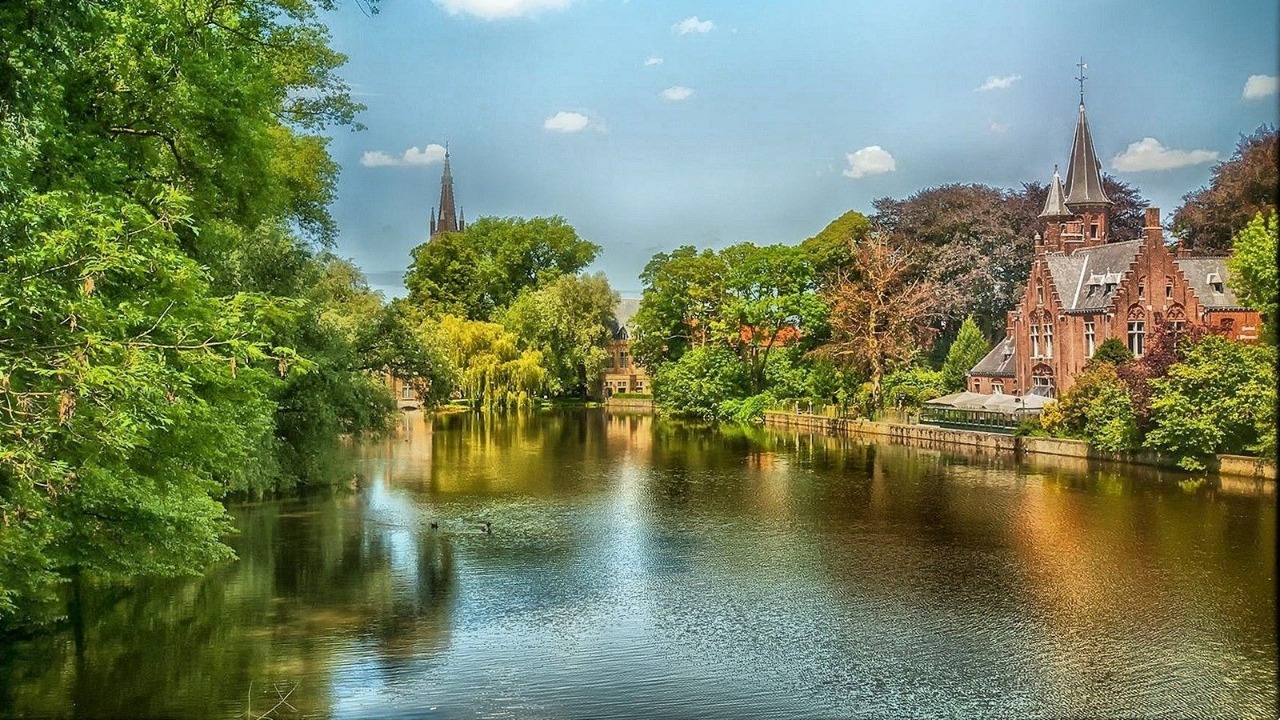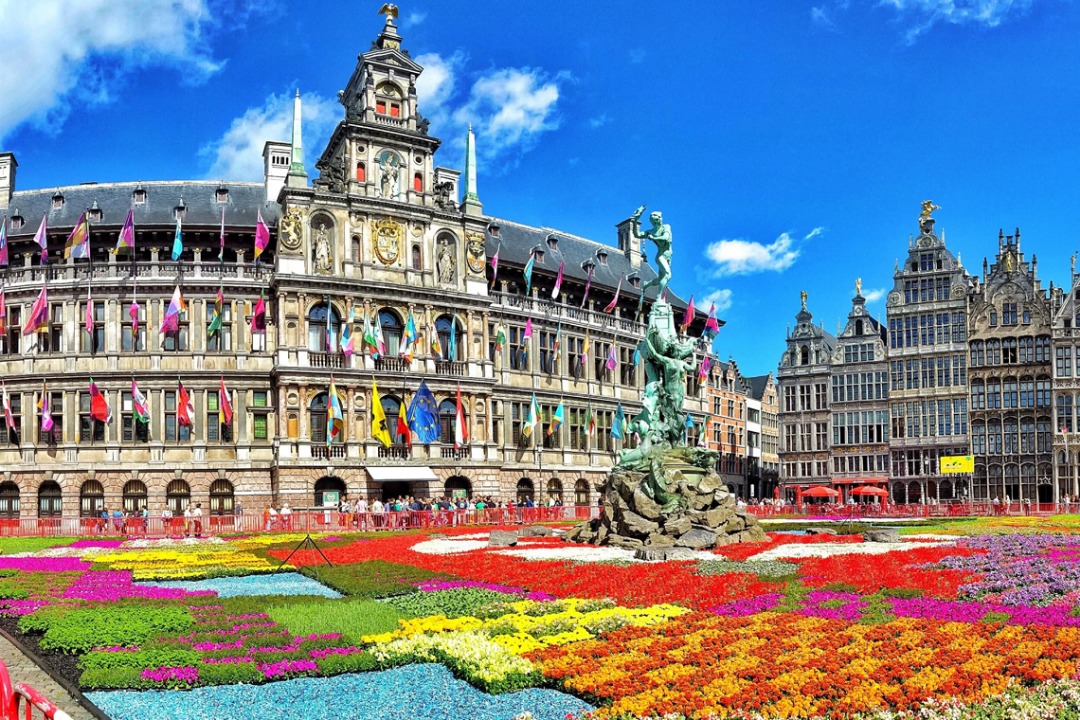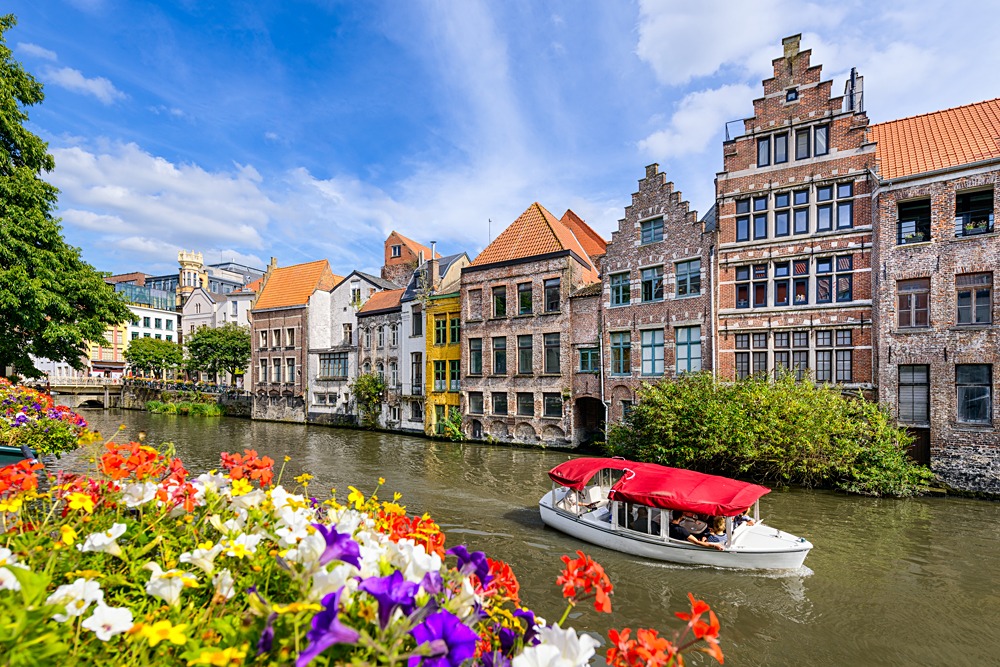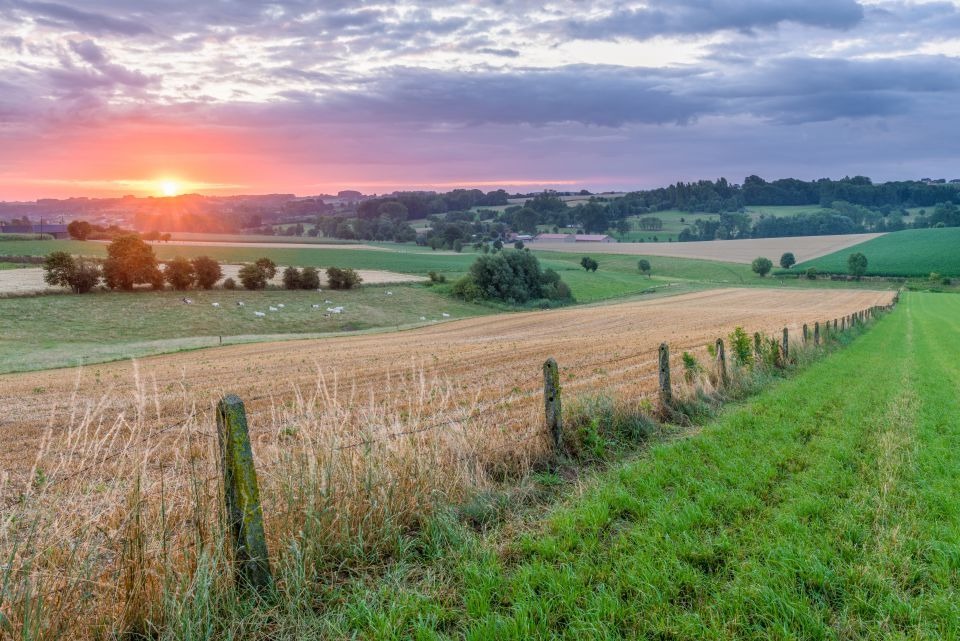Pictures of: Belgium
Location map
Airports
Hotels and other Accommodation
Golf Courses
What to visit
Consulates & Embassies
World Nomads
The Travel Insurance with the largest coverage

The Travel Insurance with the largest coverage

Belgium
Belgium officially Kingdom of Belgium is a country located in western Europe. It is a founding member of the European Union and hosts its headquarters, as well as those of other major international organizations, including NATO. Belgium has an area of 30,528 square kilometers and a population of about 10.7 million.
Occupying the cultural boundary between Germanic and Latin Europe, Belgium is home to two major language groups: the Dutch-speaking Flemings, and the French-speaking Walloons, as well as a small group of people who speak the language. German Belgium's two largest regions are the Dutch-speaking region of Flanders in the north, with 59% of the population, and the French-speaking Walloon region in the south, inhabited by 31% of the Belgians. The officially bilingual Brussels Region is a mostly French-speaking enclave in the Flemish Region and has 10% of the population. A small German-speaking community exists in eastern Wallonia. Belgium's linguistic diversity and political and cultural conflicts are reflected in the country's political history and complex system of government.
The name "Belgium" is derived from Belgian Gaul, a Roman province in the northern part of Gaul, which was inhabited by the Belgians, a mixture of Celtic and Germanic peoples. Historically, Belgium, the Netherlands, and Luxembourg were known as the Netherlands, a name used to denote a slightly larger area than the current group of countries called Benelux. From the late Middle Ages to the 17th century, the country was a thriving center of commerce and culture. From the 16th century until the Belgian Revolution in 1830, many battles were fought between European powers in the area of present-day Belgium, making the country dubbed the "battlefield of Europe", a reputation reinforced by the two World Wars. After independence, Belgium soon participated in the Industrial Revolution and by the end of the 19th century had several colonies in Africa. The second half of the twentieth century was marked by the rise of communal conflicts between the Flemings and the Francophone, fueled by cultural differences and an asymmetric economic evolution between the Flanders and Wallonia. These still active conflicts have caused profound reforms from the former Belgian unitary state to a federal state.
Occupying the cultural boundary between Germanic and Latin Europe, Belgium is home to two major language groups: the Dutch-speaking Flemings, and the French-speaking Walloons, as well as a small group of people who speak the language. German Belgium's two largest regions are the Dutch-speaking region of Flanders in the north, with 59% of the population, and the French-speaking Walloon region in the south, inhabited by 31% of the Belgians. The officially bilingual Brussels Region is a mostly French-speaking enclave in the Flemish Region and has 10% of the population. A small German-speaking community exists in eastern Wallonia. Belgium's linguistic diversity and political and cultural conflicts are reflected in the country's political history and complex system of government.
The name "Belgium" is derived from Belgian Gaul, a Roman province in the northern part of Gaul, which was inhabited by the Belgians, a mixture of Celtic and Germanic peoples. Historically, Belgium, the Netherlands, and Luxembourg were known as the Netherlands, a name used to denote a slightly larger area than the current group of countries called Benelux. From the late Middle Ages to the 17th century, the country was a thriving center of commerce and culture. From the 16th century until the Belgian Revolution in 1830, many battles were fought between European powers in the area of present-day Belgium, making the country dubbed the "battlefield of Europe", a reputation reinforced by the two World Wars. After independence, Belgium soon participated in the Industrial Revolution and by the end of the 19th century had several colonies in Africa. The second half of the twentieth century was marked by the rise of communal conflicts between the Flemings and the Francophone, fueled by cultural differences and an asymmetric economic evolution between the Flanders and Wallonia. These still active conflicts have caused profound reforms from the former Belgian unitary state to a federal state.
Tourism
Belgium may not have the charm of the Netherlands, the grandeur of Germany, the glamor of France or the artistic quality of Italy. But that does not mean that Belgium is not charming, imposing, glamorous, has delicious chocolates (and beers) and top quality plastic artists. The sum of all this makes the country a must see destination for those who want to know Europe.
Every year Belgium receives about 6.7 million tourists, mainly from neighboring countries (France, Germany, the Netherlands and the United Kingdom.
The ease of access, the density of public transport and nearby tourist attractions make Belgium a popular destination for European tourists. Most of the tourism industry is based on the coast or the Ardennes. Brussels and the Flemish cities of Antwerp, Bruges and Ghent also attract thousands of tourists annually.
Nearby tourist attractions, and museums in Belgium, proposals from more than 300 suppliers total about 20 million annual visitors. The territory of Belgium so overflowing with ideas for cave excursions, zoos, amusement parks, museums, interpretation centers, etc.
Belgium is the cradle of the euro and Tintin, with paintings of the cartoon character on the walls of some buildings.
Its architecture blends historic downtown buildings, Art Nouveau buildings and ultra-modern EU administration buildings. The symbols of the city are Atomium and Manneken-Pis. Even more charming is the central square, the Grand Place, also called Grote Markt and considered one of the most beautiful on the planet. The city is particularly pleasant on summer evenings, with its bars, florists, Belgians and tourists. A lot of people are not interested in the city, but Brussels has its fans. If the Atomium can be a disappointment, just like the statue, the Grand Place is unforgettable at night with its play of light, color and sound. Bruges - for many the most beautiful and romantic city in Europe - is full of tourists enjoying its nostalgic medieval air. It is really worth the visit, even if it is unique and brief night in the country.
Another experience where few places in the world give this opportunity, is the so conducive bike rides.
Belgium can be a good starting point for adventures in Europe.
Every year Belgium receives about 6.7 million tourists, mainly from neighboring countries (France, Germany, the Netherlands and the United Kingdom.
The ease of access, the density of public transport and nearby tourist attractions make Belgium a popular destination for European tourists. Most of the tourism industry is based on the coast or the Ardennes. Brussels and the Flemish cities of Antwerp, Bruges and Ghent also attract thousands of tourists annually.
Nearby tourist attractions, and museums in Belgium, proposals from more than 300 suppliers total about 20 million annual visitors. The territory of Belgium so overflowing with ideas for cave excursions, zoos, amusement parks, museums, interpretation centers, etc.
Belgium is the cradle of the euro and Tintin, with paintings of the cartoon character on the walls of some buildings.
Its architecture blends historic downtown buildings, Art Nouveau buildings and ultra-modern EU administration buildings. The symbols of the city are Atomium and Manneken-Pis. Even more charming is the central square, the Grand Place, also called Grote Markt and considered one of the most beautiful on the planet. The city is particularly pleasant on summer evenings, with its bars, florists, Belgians and tourists. A lot of people are not interested in the city, but Brussels has its fans. If the Atomium can be a disappointment, just like the statue, the Grand Place is unforgettable at night with its play of light, color and sound. Bruges - for many the most beautiful and romantic city in Europe - is full of tourists enjoying its nostalgic medieval air. It is really worth the visit, even if it is unique and brief night in the country.
Another experience where few places in the world give this opportunity, is the so conducive bike rides.
Belgium can be a good starting point for adventures in Europe.
Weather
Belgium's climate should be harsh, however, the proximity of the Atlantic and the modest relief of the country, which puts it under the temperate influence of the prevailing westerly winds, determine a mild temperature regime, which fluctuates between 0 ° C on average in January to 15ºC in july.
Inland, the continental character is accentuated, reaching its maximum in the Ardennes, where the winters are long and severe, mainly due to the higher altitude. Rainfall is around 1,000 millimeters across the country and is distributed fairly evenly throughout the year.
Inland, the continental character is accentuated, reaching its maximum in the Ardennes, where the winters are long and severe, mainly due to the higher altitude. Rainfall is around 1,000 millimeters across the country and is distributed fairly evenly throughout the year.
Gastronomy
Belgian cuisine is well known and there are many prestigious and highly rated restaurants in Belgium. Belgian chocolate and beer are particularly famous and widely sold.
Belgian food is closely linked to French cuisine, but some recipes have a reputation for their origin in Belgium.
French fries; Vlaamse stoofkarbonnaden aka carbonnades flamandes (a beef stew with beer, mustard and bay leaf); Paling In 't Groen (river eels in green herb sauce); Waterzooi (a broth made with chicken or fish, sour cream and vegetables), Brussels sprouts; Speculaas (a kind of cookie), and Belgian waffles are some of Belgium's legendary recipes. National food is steak (or mussels) with french fries and lettuce.
There are over 500 varieties of beer and it is in Belgium that you will find the largest brewery in the world, Inbev.
One of the legendary beers is Trappist beer, traditionally made by Trappist monks. The beer from each abbey is served in its own glass and only seven breweries (six of them Belgian) are allowed to brew Trappist beer.
Belgian food is closely linked to French cuisine, but some recipes have a reputation for their origin in Belgium.
French fries; Vlaamse stoofkarbonnaden aka carbonnades flamandes (a beef stew with beer, mustard and bay leaf); Paling In 't Groen (river eels in green herb sauce); Waterzooi (a broth made with chicken or fish, sour cream and vegetables), Brussels sprouts; Speculaas (a kind of cookie), and Belgian waffles are some of Belgium's legendary recipes. National food is steak (or mussels) with french fries and lettuce.
There are over 500 varieties of beer and it is in Belgium that you will find the largest brewery in the world, Inbev.
One of the legendary beers is Trappist beer, traditionally made by Trappist monks. The beer from each abbey is served in its own glass and only seven breweries (six of them Belgian) are allowed to brew Trappist beer.
Currency
Euro
Official language
Flemish, French, German
Required Documentation
No passport is required for Schengen signatory countries:
Germany, Austria, Belgium, Denmark, Spain, Finland, France, Iceland, Italy, Greece, Luxembourg, Norway, Netherlands, Portugal, Sweden, Switzerland, Liechtenstein, Estonia, Latvia, Lithuania, Malta, Hungary, Poland, Czech Republic, Slovakia and Slovenia.
All others must have a passport valid for more than 6 months from the first date of entry into the SCHENGEN Space and have a return ticket in their possession for a maximum of 90 days.
Germany, Austria, Belgium, Denmark, Spain, Finland, France, Iceland, Italy, Greece, Luxembourg, Norway, Netherlands, Portugal, Sweden, Switzerland, Liechtenstein, Estonia, Latvia, Lithuania, Malta, Hungary, Poland, Czech Republic, Slovakia and Slovenia.
All others must have a passport valid for more than 6 months from the first date of entry into the SCHENGEN Space and have a return ticket in their possession for a maximum of 90 days.
Health care
No particular preventive measures are required.
Other tourist destinations in:
Belgium
Belgium
Other world tourist destinations
Why to book with CLUBE TRAVEL
The best prices
Our partnerships with the world´s largest operators offer research on the best market prices.
More options
At Rotas Turisticos you can book the hotel, buy the air ticket, book the transfer from the airport to the hotel and vice versa, book the local excursions, rent the car, take travel insurance and consult the places to visit and where to go.
Holiday Tips & Destinations
Hundreds of holiday destinations with all the options that allow you to easily choose the destination that best suits your dream vacation.
CLUBE TRAVEL
Links

